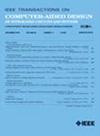间歇性友好的神经结构搜索:揭开准确性和开销权衡的神秘面纱
IF 2.9
3区 计算机科学
Q2 COMPUTER SCIENCE, HARDWARE & ARCHITECTURE
IEEE Transactions on Computer-Aided Design of Integrated Circuits and Systems
Pub Date : 2025-03-28
DOI:10.1109/TCAD.2025.3555963
引用次数: 0
摘要
微型能量收集设备与针对间歇执行优化的深度神经网络(DNN)的融合对于边缘的可持续智能应用至关重要。然而,目前的间歇性感知神经架构搜索(NAS)框架忽略了dnn固有的间歇性管理开销(IMO),导致部署时性能不佳。此外,我们观察到在NAS中直接最小化IMO可能会降低解决方案的准确性。本研究探讨了DNN结构特征、IMO和准确性之间的关系,揭示了不同DNN特征对IMO的不同敏感性。在我们的见解的启发下,我们提出了在NAS中利用IMO敏感性的两条指导方针。首先,可以缩小整体架构搜索空间,排除低IMO灵敏度的参数;其次,在搜索过程中可以主要集中高IMO灵敏度的网络块,便于发现低IMO的高精度网络。我们将这些指南整合到TiNAS中,它集成了尖端的微型NAS和间歇性感知NAS框架。在不同的数据集和延迟要求下进行评估,并在德州仪器设备上进行不同间歇功率配置的部署实验。与两种变体(一种最小化IMO,另一种忽略IMO)相比,TiNAS的精度分别提高了38%,IMO降低了33%,在更大的数据集上有更大的改进。其部署的解决方案还实现了高达1.33倍的推理加速,特别是在波动功率条件下。本文章由计算机程序翻译,如有差异,请以英文原文为准。
Intermittent-Friendly Neural Architecture Search: Demystifying Accuracy and Overhead Tradeoffs
The fusion of tiny energy harvesting devices with deep neural networks (DNN) optimized for intermittent execution is vital for sustainable intelligent applications at the edge. However, current intermittent-aware neural architecture search (NAS) frameworks overlook the inherent intermittency management overhead (IMO) of DNNs, leading to under-performance upon deployment. Moreover, we observe that straightforward IMO minimization within NAS may degrade solution accuracy. This work explores the relationship between DNN architectural characteristics, IMO, and accuracy, uncovering the varying sensitivity toward IMO across different DNN characteristics. Inspired by our insights, we present two guidelines for leveraging IMO sensitivity in NAS. First, the overall architecture search space can be reduced to exclude parameters with low IMO sensitivity, and second, network blocks with high IMO sensitivity can be primarily focused during the search, facilitating the discovery of highly accurate networks with low IMO. We incorporate these guidelines into TiNAS, which integrates cutting-edge tiny NAS and intermittent-aware NAS frameworks. Evaluations are conducted across various datasets and latency requirements, as well as deployment experiments on a Texas Instruments device under different intermittent power profiles. Compared to two variants, one minimizing IMO and the other disregarding IMO, TiNAS, respectively, achieves up to 38% higher accuracy and 33% lower IMO, with greater improvements for larger datasets. Its deployed solutions also achieve up to a 1.33 times inference speedup, especially under fluctuating power conditions.
求助全文
通过发布文献求助,成功后即可免费获取论文全文。
去求助
来源期刊
CiteScore
5.60
自引率
13.80%
发文量
500
审稿时长
7 months
期刊介绍:
The purpose of this Transactions is to publish papers of interest to individuals in the area of computer-aided design of integrated circuits and systems composed of analog, digital, mixed-signal, optical, or microwave components. The aids include methods, models, algorithms, and man-machine interfaces for system-level, physical and logical design including: planning, synthesis, partitioning, modeling, simulation, layout, verification, testing, hardware-software co-design and documentation of integrated circuit and system designs of all complexities. Design tools and techniques for evaluating and designing integrated circuits and systems for metrics such as performance, power, reliability, testability, and security are a focus.

 求助内容:
求助内容: 应助结果提醒方式:
应助结果提醒方式:


